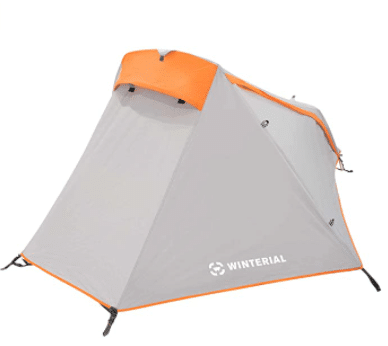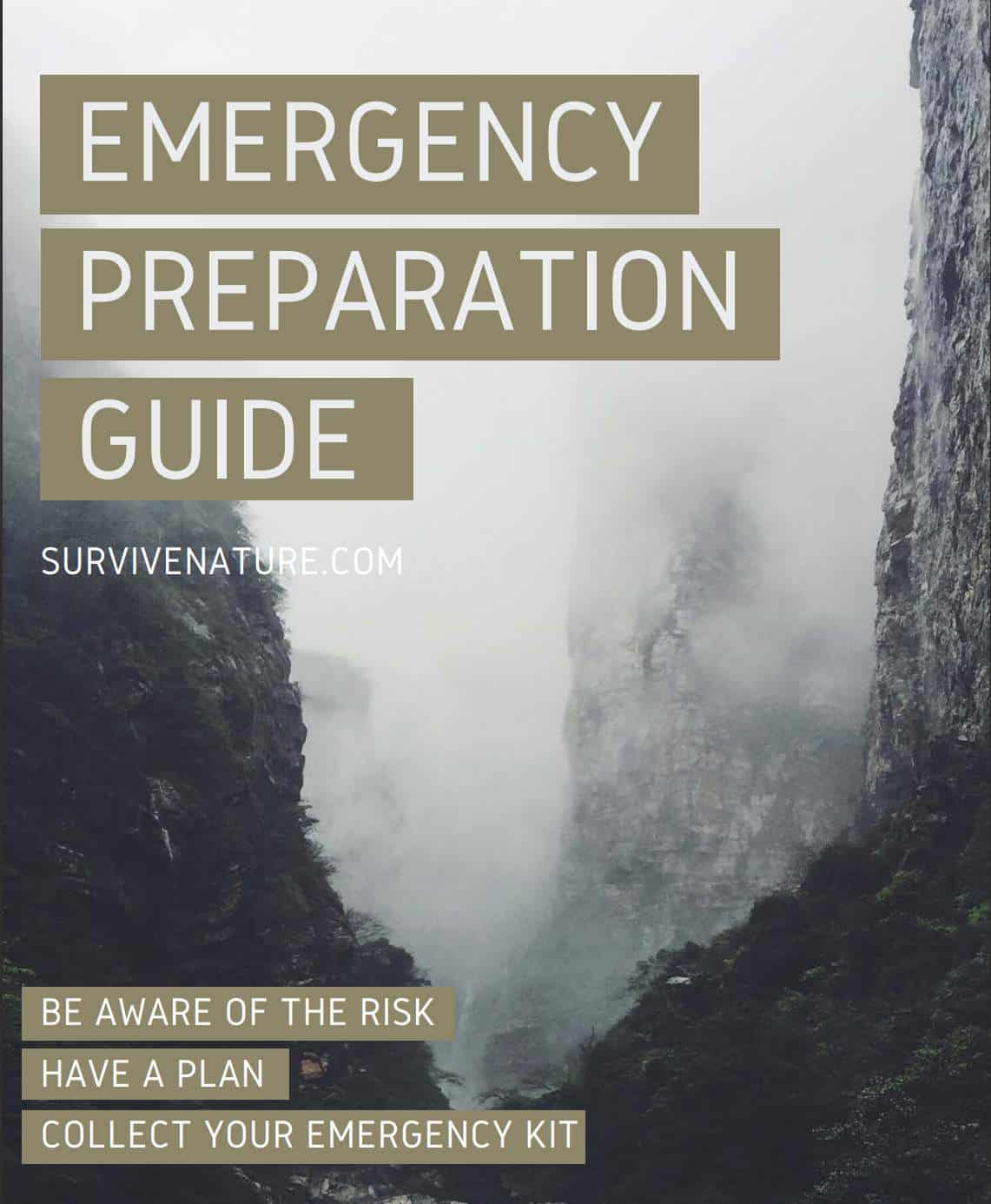Having to survive in the jungle in 2023 is a task hard to complete. While the way out seems to be out of the question, there are always chances for survival. However, those who find themselves lost in the jungle should have at least the necessary survival skills. Otherwise, the dangers of the wild will grow unbearable quite soon, and life will be under a severe threat.
The dangers that lie beneath the canopy of green trees that make up the jungle are too numerous to count. The environment is infamous for testing human limits. By sticking to these guidelines and survival hacks, it is possible to survive this harsh environment and get back home safely.
The jungles’ threats are plenty, from the moisture giving birth to armies of mosquitos and other insects to ferocious predators hiding in the bushes and annoying monkeys swift in stealing your scarce food sources. If you get lost in some Amazon Rainforest, there are several things to consider doing if you want to get out of the jungle alive. In our article, you will find out about everything you need to know to sustain your life in the jungle, cut off other persons in the unidentified surroundings. You will boost your survival skills so that you could have more chances to tackle a difficult survival situation. We searched for the most efficient tips on how to survive in the jungle and created this guide. We hope the information in our articles will make getting lost in the Jungle a less distressing experience.
Disclaimer: The survival tips on this website are for informational purposes only. The authors take no responsibility for the reader’s actions or usage of the information presented on this page.
1. STOP and Think
Use the Boy Scouts mnemonic device of “S T O P,” which stands for “Stop, Think, Observe, and Plan.”
You’ve just discovered that you are lost in the jungle. You’re unsure about whether or not rescue will be arriving. Here is a list of things you should be doing:
- Find a source of drinking liquid.
- If you don’t have a proper tent or a Bivvy with you, find or build a shelter before nightfall.
- Fashion a weapon you can use for self-defense.
- Wait to see if the rescue arrives.
- Find a source of food.
- Travel in one direction during daylight hours.
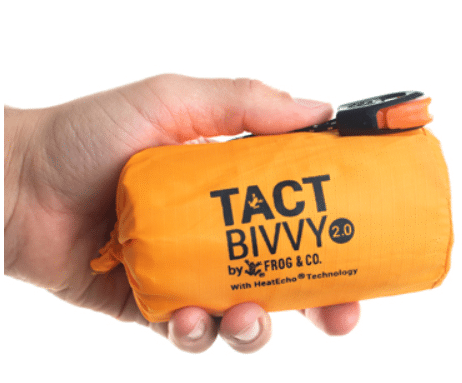
And more! We will guide you through the most effective things to prevent harm to your body and mind while being rescued.
2. Don’t Panic
Your safety will be in your hands, and the success of your survival escape plan will largely depend on your clear thinking and mindful actions. You should use a positive frame of mind and focus on nothing but getting out of the jungle alive.
You should keep cool, calm, and collected to sustain yourself in safety while in the jungle. Before you start searching for the essentials of jungle survival, a good idea would be to look for the source of self-assuredness and prioritize well to make sure you are doing everything to help your position.
The most important thing is keeping sane and active, even in dramatic circumstances. If you want to hit the news line in a renowned magazine’s article, make sure to heed the recommendations on survival in the jungle we provide in our article. Read on.
3. Finding Water
Water is an essential resource for the human body to keep on living. We cannot get along without water for more than three days without compromising our wellbeing. Without a water bottle or a water can, it can get tough to make it through and survive in the jungle. This is why finding a water source is a crucial component of surviving until the end.
In contrast to the dry climate of the desert, the jungle is an abundant source of water. In many rainforests, rainfall is common and can be used as a source of hydration. You can choose the water source from several of those common for the jungle area.
Common Sources of Hydration
Rainfall
The leaves in the jungle are large and can be used to collect rainwater. Just funnel the large leaves into water storage containers, and you will have sufficient water for later use. Ensure the leaves are clear from insects or other small animals who can spoil the water and cause digestion-related disorders.
Rivers
Make sure that the water in the river you choose is drinkable. A good sign will be if you see animals drink from the river. To make sure you don’t get indigestion, boil it, or use water stills.
Streams
Look for streams. You will want to boil any water that you collect from a stream to kill any bacteria. If you don’t have a pot to boil water, then consider using a tin/aluminum can.
Bamboo Stalks
Every hunter knows that the bamboo collects droplets during rainfall, sufficient to be a great water source. Bend the bamboo stalks to fill a container for later use.
Palm Leaves
Due to the high humidity level in the jungle area, moisture condenses on multiple surfaces, including large leaves of various plants growing in abundance. Collect drops from the bamboo leaf and find something to store them.
Store Water
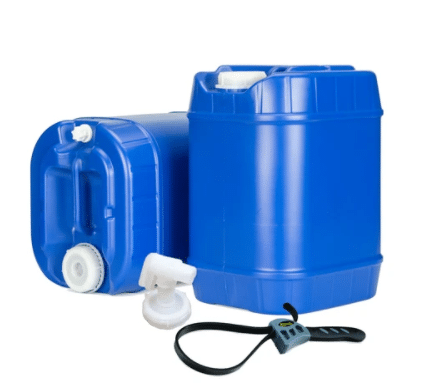
Natural Reservoirs
Sometimes, you can find nature-made pools of condensed or rainwater. The best thing to do is to collect it right after the rain. Some long-standing ones may be home to harmful bacteria.
Create a Solar Water Still
Step 1: Dig a hole into the soil.
Step 2: Put a container in the center of the hole.
Step 3: Fill the gaps surrounding the container with anything wet, such as leaves.
Step 4: Place a plastic sheet over the hole and anchor the sheet in place with larger rocks around the hole’s edges. The liquid will condense on the surface of the sheet and stream down in the container.
Step 5: Place one small rock in the center of the plastic, just over the container.
Step 6: Condensation will occur on the underside of the plastic and run down to the center. It will drip into the container filling it with distilled drinking water.
4. Finding Food
Since the jungle is such an abundant resource of vegetation and animals, the resources for finding food are everywhere. It’s just a matter of how to get access to it. Keep moving forward and look for something to eat as you go. Here are some tips for getting food in the jungle.
Hunting/Trapping Animals


After having a canned meats supply, your second best bet is to trap animals while you are sleeping. For that, you need to create a trap and entice a wild beast to get into it. Making a mistake in the trap-building may cost you a lot if the ferocious wild animal gets free and starts at you. It can be difficult to build a sustainable trap without your gear’s positions, but there is a simple way to do it using the things at your disposal.
Using a deadfall trap is an effective method of trapping animals, and you can set up many of them to increase your chances of catching more food. You can skin the animals you trap to use their skins as clothes to protect yourself from cold.
The 4-Figure Deadfall Trap
Step 1: Gather 3 branches and a heavy stone.
Step 2: Cut notches in the branches, as indicated in the illustration below.
Step 3: Hold up the rock with one hand while positioning sticks “A” an
d “C.”
Step 4: Once the weight of the rock is resting on “A” and “C,” use your free hand to insert and mount the trigger stick “B.”
Step 5: Let go, and the trap should be balanced and set.
Step 6: When a bird or animal comes along to eat the bait, the trigger stick will trip, and the rock will kill with a fatal blow.
Fishing
Another source of protein in the jungle is fish. An effective way to catch them is through the use of a pronged fishing spear. Your survival menu can be composed of fish at least by half. It will give you sufficient energy to keep moving towards the happy end of your ground-breaking adventure. However, you should catch the fish first.
In different regions, tips for fishing may differ depending on the type of common fish in rivers. However, spear-fishing is one ultimate technique you can employ to catch a bigger fish to keep you full and energized.
Make a 4-Pronged Fishing Spear
Step 1: Get a long bamboo stalk to use as your spear.
Step 2: Use a knife to cut cross hairs into the tip so that the end of the spear separates into four individual prongs.
Step 3: Separate the prongs with a vine to keep them apart.
Step 4: Stand on a rock overlooking the river or stream.
Step 5: Wait for a fish to come within striking range, then jab at it with the spear to catch it.
Cook to Minimize Risks
To avoid consuming bacteria or parasites, it is highly
recommended to cook the fishes on fire. Here is a simple way:
- heat some stones you can find around
- make a hole of 1-foot depth and 2-feet width in the ground
- get the hot stones into the hole
- use the green leaf to cover your fish: a banana tree is one ultimate option
- close the hole with the ground to keep the temperature of the cooking
- cook for 60 minutes and eat carefully to avoid bones
Eating Plants
Among the edible plants in the jungle, the safest to stick to ar
e palms, bamboo, and common fruits. If you are unsure about whether a plant is
poisonous or not, it’s probably better not to eat it. Try to find those plants and fruits that look common to avoid severe indigestions or even death. Telling one tree from another might be a tough task to tackle, so stick to the familiar things to stay safe.
There are some things to consider while choosing plants for your meal:
- do not eat yellow berries
- avoid mushrooms unless your knowledge of them is profound
- do not eat thorny plants
- bitter fruits will not do
- the glittering leaf is a bad sign
- three-part leaf pose a threat
- anything with an almond-like odor is a no go
5. Find or Build a Shelter

you can find around, you don’t have a Tact Bivvy or a good tent. try to find a dry and safe place in the area. You can make it more home-like by bringing some leaf and piling branches at the entrance to prevent break-ins from wild animals. It can be a cave in the rocks or a hollow pit several feet under the ground. Be careful: such places can be dens of different animals. So check the surroundings for some animal trail and signs of beasts’ presence.
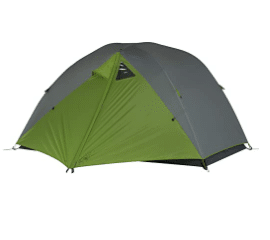
To be safe from dangers day and night, the essential thing is finding a place to hide and sleep. You can never know how long you will have to stay in hardship, so your shelter must be safe from rains, colds, and beats.
It is essential to economize energy and find ways les
s time and energy-consuming. If you decide to move on towards the escape, you need a shelter that is easily built.
Creating a “Lean-To” shelter
Among the simplest way to make a temporary shelter is a lean-to method. As is clear from its name, the method implies leaning the structure on a tree. All you need is a long log. Measure space under the log to be able to fit you in. And cover the structure with the leaf to keep the warm inside and prevent leakages that will disturb your sleep and harm your health. Here is a step-by-step plan for making such a shelter:
Step 1: Search for a large branch and lean one end up onto a tree.
Step 2: Put smaller branches at 45-degree angles along the le
ngth of the large branch.
Step 3: Cover the entire structure with leaves and foliage.
6. Make A fire
A fire is a must for any survival: it can make you warm, promote cooking and drinking water production, and keep off wild beasts in the night time. It can be challenging to fire in the rainforest due to the high humidity and the absence of dry wood to start the fire.
Look for very dry wood pieces around you, and try to co
ver your fire from all sides to keep it away from the winds. You c
an fuel the fire with damp wood once the flame is substantial. Anyway, once you have some survival matches (have a look at this permanent model) or a Ferro rod, it will serve you well!
o not make your fire too big. Of course, you can bank on som
eone close to you, noticing the smoke, but it can also attract the attention of predators or even lead to a massive fire.
Before you live the place of your disposition, but the flame out.
At night, keep the fire burning: it will save you from the wild beasts.
Structure
Step 1: Pick up dry pieces of wood and sticks of different sizes.
Step 2: make a tepee shape out of small twigs and place some tinder in the middle.
Light It Up
If you have anything made of glass, use it to concentrate the sun’s beams on the tinder to light it up. Then blow when it starts smoking. Otherwise, your best alternative is to use the “Plow” method.
Fire-Plow Method
Step 1: Find some softwood. And make a groove in it.
Step 2: Put some tinder at the side of the piece that you will ignite.
Step 3: Using a hard branch, plow the end up and down this groove to create friction.
Step 4: The small parts will begin to burn. Blow on it to fuel the catching process with oxygen.
Step 5: When it catches, put more twigs to build it up.
There are also such tools as a bow drill to make yourself with some materials at your disposal. It is better to do a small research about other methods before you go to the woods.
7. Traveling/Resting
Travel during the day while sleeping at night. Save up energy on hunting by making traps and fashioning efficient tools.
The jungle presents the obstacle of numerous plants a
nd trees blocking your path. A walking stick to use for parting any vegetation that gets in your way is a good tool to have. The walking cane can also help you get out of sticky situations, such as quicksand.
Walk In One General Direction
Focus on a reference point in the distance to aim for and
another reference point behind you to walk away from. This will help you from walking in circles. A reliable tactical watch would be of great assistance in the survival situation.
As you make your way through the jungle, look for trails left by animals. If they are heading in the same direction that you are going, then follow them. They may lead to water sources or open areas of the jungle that will increase your chances of being seen by rescue parties.
Follow Water Downstream
Following a water source will keep you concentrated and minimize disorientation risks: water sources usually lead to civilization’s rivers and spots.
8. Beware of Predators
Depending on the jungle location, there are
many predatory animals, so stay alert. Move through the jungle smoothly and avoid making a lot of noise. Your best self-defense option is to search for a strong stick and carve the tip into a spear.
Avoid making any loud sounds, and walk as carefully as you can. Also, be alert to the sound you hear around you. The fauna of the jungle is so diverse that you will always hear animals and birds. Be watchful and note every suspicious sound.
Some creatures can get at you if they think that you pose a threat to their babies. Avoid encounters with such dangerous beasts. If a beast attacks, you will have to defend yourself or run away as quickly as possible, which can be hard to handle, let alone win a fight with the creature. The best option is to avoid such meetings.
While traveling, be cautious about the presence of snakes. If the snake bites, make bondage and keep the bitten spot above the heart level. Do not suck out the blood with the poison: it will only help the venom spread throughout your organism. Avoid extra movement and preferably keep staying in a horizontal position. Breathe normally, and try to calm down. If you have soap, wash the wound.
9. Beware of Mosquitos & Dangerous Parasites
Mosquitos in the jungle are known for spreading disease. Some of which are Malaria, Dengue fever, and Yellow Fever. If you don’t have a mosquito net or a repellent, saving yourself from the bites will be a hard task. However, there is always something you can do. Consider the recommendations below.
You are lucky if you have a repellent on you.
If you do not have a repellent:
- Wear long-sleeved shirts and pants.
- Rub mud on any exposed skin to avoid bites.
- Tie a shirt over your head and let it cascade down over your shoulders.
- Check your clothing and shoes before putting them on for spiders and other insects.
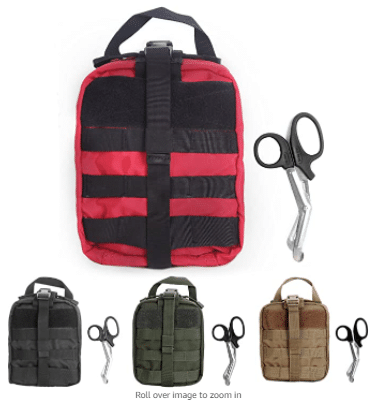
Rainforests bustle with malaria-caring insects. The World Health Organization claims that such measures as anti-malaria vaccination are great weapons against severe disease. Do not leave large spaces of your skin uncovered to avoid deadly bites. Mind to have a medical kit around if there is any probability of getting lost in the jungle: you will thank your past self mighty. Look at this survival medical kit, for instance.
10. Getting Rescued
It’s difficult to rely on the rescue when you are in the jungle due to trees’ natural canopy covering the ground surface below.
If you are stuck in the jungle due to a plane crash, then stay at the site of the plane to see if the rescue arrives.
When you are fairly certain that nobody is coming to your rescue, only then should you follow the traveling tips described in this guide.
Message to Rescuers
Make some highly-visible messages so that people flying in helicopters, searching for you could locate you faster. It can be an S O S sign made out of stones and branches. Fire smoke is another great sign to give to the world. People can see it from a large distance and come t
o rescue you.
Use Landmarks and Leave Marks
Try to locate the way back to where you came from. Some landmarks that you have passed by can help find the path out of the rainforest. Come back to more familiar territory, watch your own footprints and other signs of your past presence, such as a broken branch. As you go, you can leave some items on the road to use as marks if you need to come back afterward. It will help you not to get deeper into the rainforest.
11. In case of a Plane Crash
If you find yourself lost in the rainforest after an air catastrophe, stay where you are: it will be easier to find you near the site of a crash. Wait for some time for the rescue to come, but if you think you will be safer somewhere else, then change your disposition. Be a careful listener and try to detect the sound of helicopters, cars, other humans. Attract their attention as much as possible and get to some high spot to make yourself more visible.
12. Minimize Risks
Apart from ferocious beasts hiding somewhere near you, there are many other difficulties you can face during your survival in the rainforest:
Falling trees: This risk is high in the rainforests. Be watchful, and d a giant log will not smash you.
Environment: In the rainforest, weather can switch between extremities very quickly, from stupefying heat to rainfalls and unbearable wetness. Keep your clothes on at all times. Keep your head from overheating and a sun-stroke.
Swamps: Be alert while traveling through the rainforest. Arm yourself with a stick to prod the ground in front of you as you go. Avoid anything that seems suspicious to you. Your alertness is worth your life.
13. Be Prepared
The best humans can do to get away from the rainforest safe and sound is being prepared. There is a wide spectrum of various devices6, tools, and weapons that can come in handy and simplify any seemingly desperate situation. Before going on a hike across the unknown territory, take a knife, matches, or portable radio, don’t forget a repellent and a hat to keep away from the harmful sun, take as much provision and still water as possible.
Your safety is in your hands, no matter where you are. Of course, a proper set of survival gear maximizes your chances greatly, too. The most important thing to survive is the knowledge you should possess. It concerns the essentials like making a fire or a fishing device, building a shelter, orienting on the territory, and more. To raise your awareness of the most applicable survival techniques, surf the internet and read articles on the topic. It will increase your chances of survival manifold.
Take the clothes that might come in handy, like a tactic jacket or special trousers. Ensure the clothes you take are made of natural materials to avoid overheating. Remember about sustainable footwear. The odds are that you will have to walk a lot.
By following the instructions in our article, you increase your chances of survival in the rainforest. Reread it to ensure that you are perfectly ready to get away from the jungle safe.

